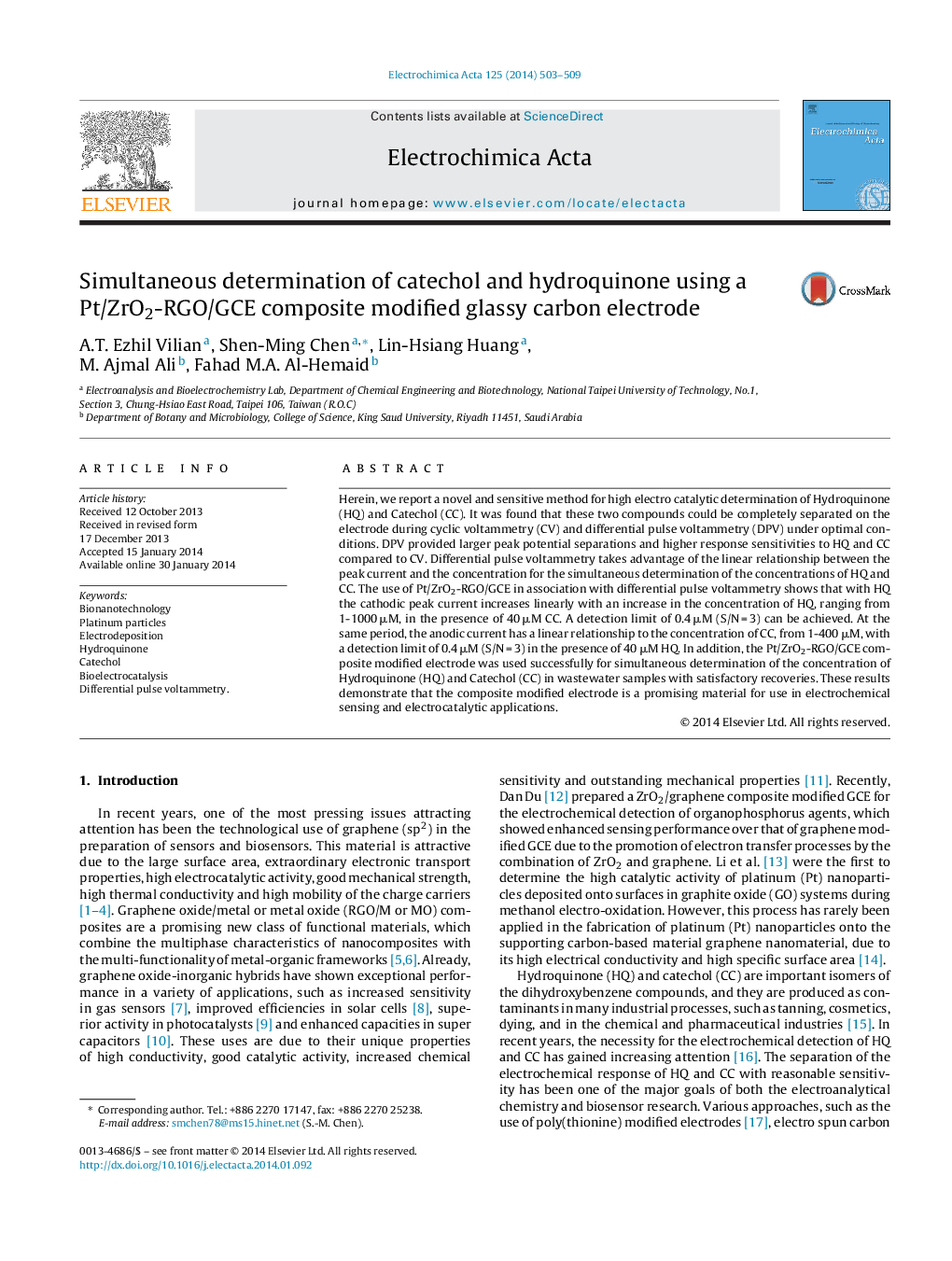| Article ID | Journal | Published Year | Pages | File Type |
|---|---|---|---|---|
| 186254 | Electrochimica Acta | 2014 | 7 Pages |
•Facile and electrodeposition of Pt nanoparticles decorated on the surface of electrochemically reduced graphene oxide -ZrO2 composite modified electrode has been prepared.•High sensitive simultaneous determination of hydroquinone and catechol was demonstrated.•The proposed method can be used in research assays and environmental diagnosis.•Sufficient enough peak separation around 120 mV−1 for hydroquinone and catechol in waste water samples.•The modified electrode showed good stability, reproducibility, sensitivity and wide linear range.
Herein, we report a novel and sensitive method for high electro catalytic determination of Hydroquinone (HQ) and Catechol (CC). It was found that these two compounds could be completely separated on the electrode during cyclic voltammetry (CV) and differential pulse voltammetry (DPV) under optimal conditions. DPV provided larger peak potential separations and higher response sensitivities to HQ and CC compared to CV. Differential pulse voltammetry takes advantage of the linear relationship between the peak current and the concentration for the simultaneous determination of the concentrations of HQ and CC. The use of Pt/ZrO2-RGO/GCE in association with differential pulse voltammetry shows that with HQ the cathodic peak current increases linearly with an increase in the concentration of HQ, ranging from 1-1000 μM, in the presence of 40 μM CC. A detection limit of 0.4 μM (S/N = 3) can be achieved. At the same period, the anodic current has a linear relationship to the concentration of CC, from 1-400 μM, with a detection limit of 0.4 μM (S/N = 3) in the presence of 40 μM HQ. In addition, the Pt/ZrO2-RGO/GCE composite modified electrode was used successfully for simultaneous determination of the concentration of Hydroquinone (HQ) and Catechol (CC) in wastewater samples with satisfactory recoveries. These results demonstrate that the composite modified electrode is a promising material for use in electrochemical sensing and electrocatalytic applications.
Graphical abstractFigure optionsDownload full-size imageDownload as PowerPoint slide
